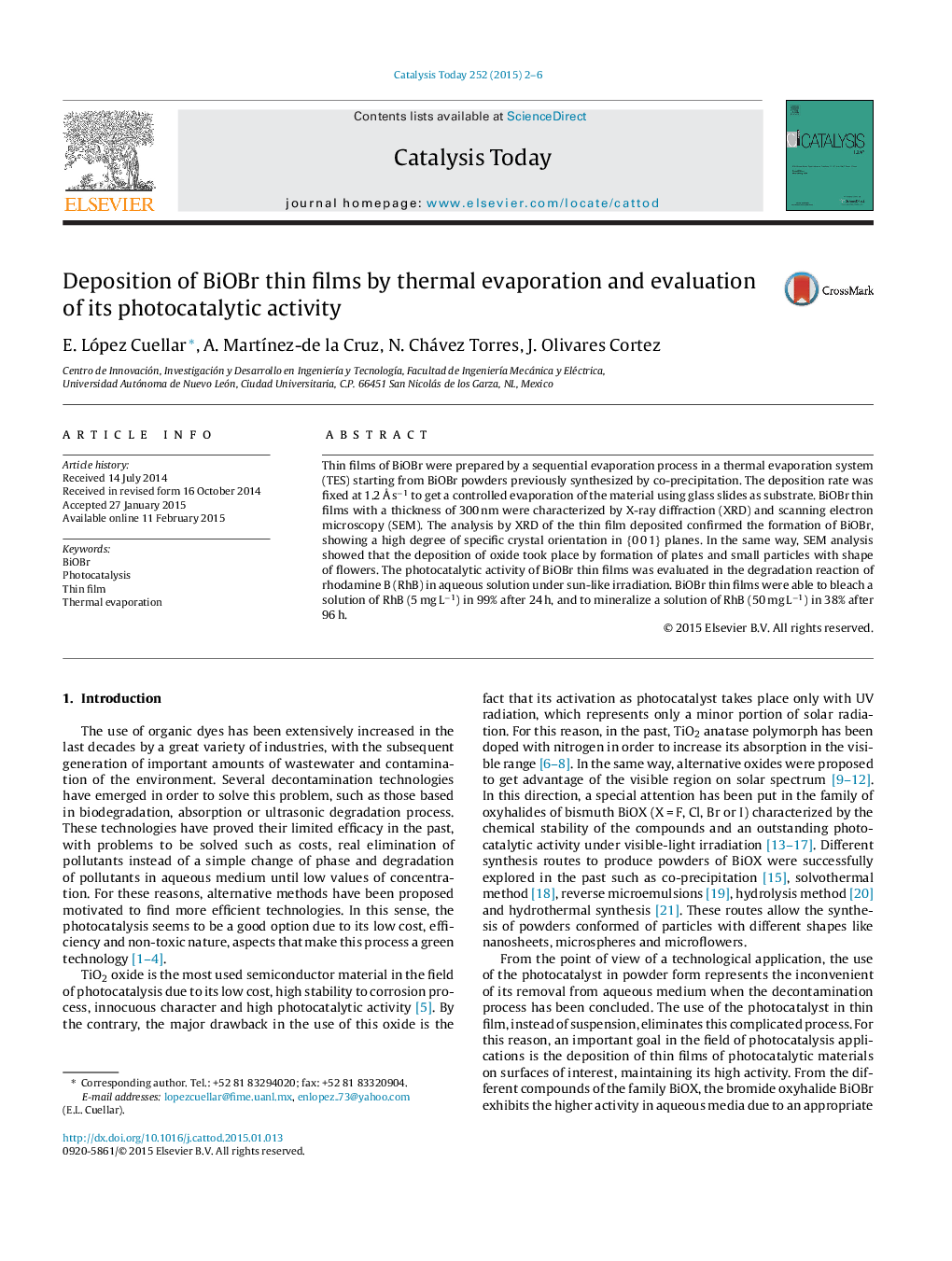| Article ID | Journal | Published Year | Pages | File Type |
|---|---|---|---|---|
| 53842 | Catalysis Today | 2015 | 5 Pages |
•Thin film of BiOBr was elaborated by thermal evaporation deposition.•The deposition of the thin film was oriented in the direction of the (1 0 0) facet.•Thin film of BiOBr showed high photocatalytic activity in the degradation of RhB.•The photocatalytic activity of the thin film was maintained high after four cycles.
Thin films of BiOBr were prepared by a sequential evaporation process in a thermal evaporation system (TES) starting from BiOBr powders previously synthesized by co-precipitation. The deposition rate was fixed at 1.2 Å s−1 to get a controlled evaporation of the material using glass slides as substrate. BiOBr thin films with a thickness of 300 nm were characterized by X-ray diffraction (XRD) and scanning electron microscopy (SEM). The analysis by XRD of the thin film deposited confirmed the formation of BiOBr, showing a high degree of specific crystal orientation in {0 0 1} planes. In the same way, SEM analysis showed that the deposition of oxide took place by formation of plates and small particles with shape of flowers. The photocatalytic activity of BiOBr thin films was evaluated in the degradation reaction of rhodamine B (RhB) in aqueous solution under sun-like irradiation. BiOBr thin films were able to bleach a solution of RhB (5 mg L−1) in 99% after 24 h, and to mineralize a solution of RhB (50 mg L−1) in 38% after 96 h.
Graphical abstractFigure optionsDownload full-size imageDownload high-quality image (136 K)Download as PowerPoint slide
